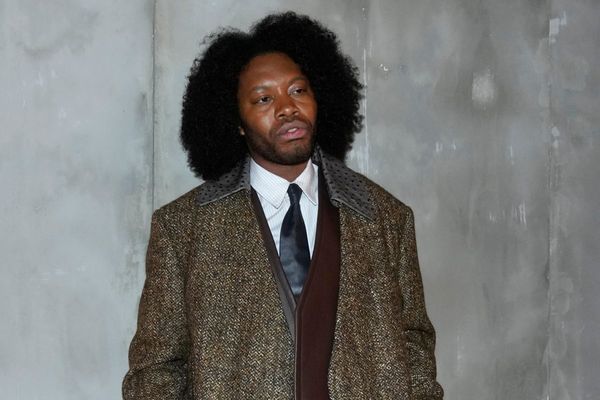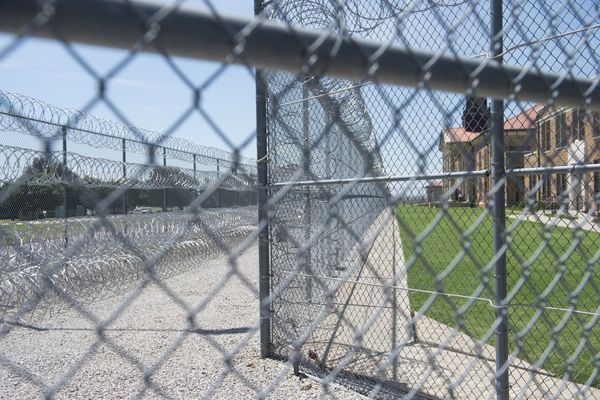
The exciting possibility that mature body cells, such as skin cells, might be transformed and used to repair damaged hearts or brains was long seen as science fiction. Once a cell had reached its specialised mature state, biologists thought, it could not adopt another identity. John Gurdon, who has died aged 92, was the first to show that it could. In 2012 he shared the Nobel prize for medicine with the Japanese researcher Shinya Yamanaka for this discovery.
In 1958, while still a graduate student at Oxford University, Gurdon reported that he had removed the nuclei, which contain the cell’s DNA, from frog eggs and successfully replaced them with nuclei taken from cells lining the guts of tadpoles.
“John was able to show that the nucleus from a tadpole intestine would support the development of an individual adult animal,” said Sir Jim Smith, emeritus scientist at the Francis Crick Institute in London. “And that was a really profound result. It showed that, effectively, nuclei could go backwards in developmental time.”
The result set off a global effort to discover the chemical signals that drive this reprogramming. Almost half a century later Yamanaka altered the genes in connective tissue cells from mice to return them to a state, known as induced pluripotency, in which they could develop into any other kind of cell. Researchers in many labs are pursuing this route to try to create populations of cells that can be tailored to treat human disease. Another line of research led to animal cloning: Ian Wilmut and Keith Campbell used a method similar to Gurdon’s to create Dolly the sheep, born in 1996.
At the time Gurdon began his experiments, it was not clear whether or not every cell in an organism’s body had the same set of genes. Gurdon loved a simple question, and set out to answer this one. Although only a minority of his transplanted eggs turned into frogs, enough of them did to show that, indeed, every cell did contain all the instructions necessary to build the whole animal. In his Nobel lecture, Gurdon talked about the “battle for supremacy” between the egg and the nucleus, the egg being programmed to divide rapidly into different specialised cells, while the mature cell nucleus needs to remain stable. With his graduate student Ron Laskey, he began to identify the weapons in this battle, molecules that determine whether specific genes are turned on or off. He was not satisfied with knowing the identities of these molecules, and later sought to measure the effect of their concentrations, and the length of time the cells were exposed to them.
Defects in the systems that keep mature cells stable can lead to cancer. In 1982 Gurdon, Laskey and other leading biologists, including Martin Evans, who won the Nobel prize in 2007 for his work on embryonic stem cells in mice, co-founded the Wellcome Cancer Research Campaign Institute in Cambridge to continue research on cancer and development. In 2004 it was renamed the Gurdon Institute in his honour. “Identifying outstanding young scientists and bringing them in, in a way that made everybody feel they had a say in the running of the place, really made it quite distinct and unusual,” Smith said; he succeeded Gurdon as chair of the Gurdon Institute in 2001. Always happier at the bench than in the office, Gurdon continued to work on amphibian cells in his laboratory until his 90s, clearing every Tuesday and most Wednesday mornings for experiments.
Whether through family pride or simply because he loved facts, Gurdon included in his Nobel autobiography a genealogy tracing his male antecedents (more than half of them called John) back to the arrival of William the Conqueror. He was born in Dippenhall, a village near Farnham in Surrey, and grew up in nearby Frensham. His father, William, had been decorated for his service during the first world war, and had retired from a career as a banker in India by the time John was born. His mother, Marjorie (nee Byass), had trained as a PE teacher, giving up work to raise John and his sister, Caroline, and afterwards becoming a leading figure in the Women’s Institute.
John attended a private prep school before being sent to Eton college in Berkshire as a boarder, which he found “intensely uncomfortable”, though he captained the school squash team. He was an avid lepidopterist and annoyed his housemaster by keeping caterpillars in his room. His career narrowly missed being driven off course by a report from his biology teacher, placing him last in his year and dismissing his idea of becoming a scientist as a “sheer waste of time, both on his part, and of those who have to teach him”. Gurdon kept the report framed on his wall in later years.
Forced to study Greek and Latin instead, Gurdon achieved mediocre results, but by his own account his family and teachers pulled strings to get him into Oxford University to read zoology. He had to spend a year at a crammer taking biology A-level, and a further year of elementary physics, chemistry and biology at Oxford before he could begin the zoology honours course in 1953.
After he graduated, his career finally took off when a lecturer in developmental biology, Michael Fischberg, invited him to try experimenting with the eggs of Xenopus, the African clawed frog, as a doctoral project. The success of the work meant that for the first time he became “an intensely hard worker”. He spent a year as a postdoctoral researcher at Caltech in Pasadena, California, learning about molecular biology, before returning to Oxford as an assistant lecturer in zoology.
In 1972 he moved from Oxford to the Medical Research Council Laboratory for Molecular Biology in Cambridge, at the invitation of its chair, the Nobel prizewinner Max Perutz. His experience of Perutz’s non-hierarchical style of management was a strong influence on the environment he tried to develop as chair of the Wellcome CRC Institute. Meanwhile he developed a lecturing style that reduced highly complex biology to a series of simple questions. “Those early lectures changed my life,” Smith – who was an undergraduate at the time – said. “They really had an influence on me and on other developmental biologists.” Gurdon synthesised the ideas in those lectures into an equally influential paperback, The Control of Gene Expression in Animal Development (1974).
Gurdon was knighted in 1995. Disinclined for administration, he was nevertheless a governor of the Wellcome Trust from 1995 until 2000, and at the same time the master of Magdalene College, Cambridge. He told the college authorities that he would accept the post only if he could continue with his scientific work, and that the most time they could expect from him was a couple of hours each evening (he waived his salary so that they could hire a professional fundraiser).
Disarmingly, Gurdon described himself as “the ultimate non-intellectual”, in that he never went to the theatre or concerts and “hated” reading books. He kept fit and was a more than competent skier, skater and mountain climber, as well as playing squash, tennis and table tennis. Colleagues noted “eccentricities”, such as his suspicion of foreign cuisines or exotic ingredients, though he was a frequent traveller. He liked fast cars, but otherwise allowed himself few luxuries.
Gurdon met Jean Curtis, whose family ran a property business, while he was an assistant lecturer at Oxford, and they married in 1964. During his tenure as master of Magdalene, Jean threw herself into the role of master’s wife, giving Sunday lunches for undergraduates so that she met each of them once a year.
She survives him, as do their children, Aurea and William, and two grandchildren.
• John Bertrand Gurdon, cell biologist, born 2 October 1933; died 7 October 2025







